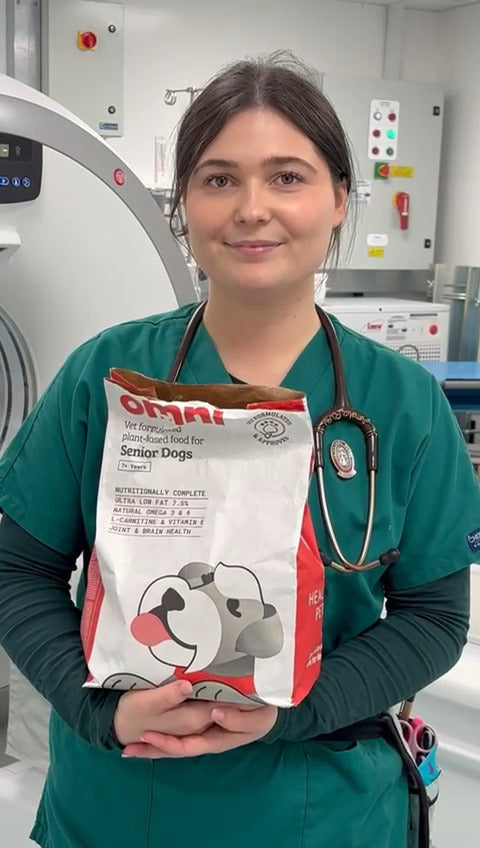Is my dog overweight?

Is my dog overweight?
People often get very focused on an exact weight for their breed, but remember, all dogs are individuals. Even within a breed, or a litter, there are variations in frame size and weight. The most important thing is to find out what YOUR dog’s ideal weight is, and adjust the type and amount of food you feed, to suit their lifestyle, size and their taste preferences.
How do I tell the right weight for my dog?
Great question - vets and veterinary nurses will typically examine your dog and assign a ‘body condition score’, to determine if they think your dog is underweight, overweight or in ideal condition. This score looks at following simple body characteristics to determine if your dog is carrying some extra weight:
Can we feel the ribs easily? Gently feel over your dog’s ribs- there should be a thin cover of fat, with the ribs being easily felt underneath. If there is a thick layer of fat making it difficult to feel each rib, then your dog may need to lose a bit of weight.
Does your dog have a waist? Have a look at your dog from above whilst standing. Just behind their rib cage, they should have a narrowed, pinch at the waist. Still standing, looking at them from the side. Again, just after their rib cage, they should have a waist that tucks up so that your dog doesn’t look square.
In most breeds if you can clearly see their hip bones, spine or ribs this may be an indication that they can do with putting on a bit of weight- but do bear in mind, if you have a sight hound or a lean breed, this may be normal for them.
Not totally sure? No problem. Why not pop into your local vets and speak to a vet or nurse. They could give your pup an assessment, and it’s always great to get regular weigh-ins when you’re passing by. As dog parents, we see our dogs every day making it difficult to spot subtle weight gains. By regularly popping into your clinic, you can measure their precise weight – but hopefully the fuss and routine of going to the vets will help reduce your dog’s anxiety and negative associations they build by only going to the vet for vaccinations and illnesses.
Any more questions? Why not drop our vet team a message at woof@omni.pet and we’d love to help







 85 Great Portland Street, 1st Floor, London, W1W 7LT United Kingdom
85 Great Portland Street, 1st Floor, London, W1W 7LT United Kingdom





